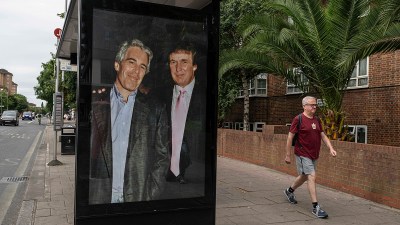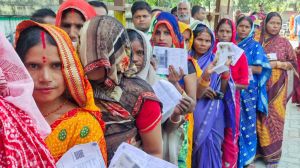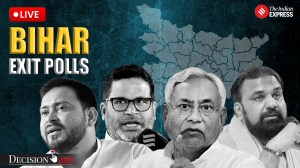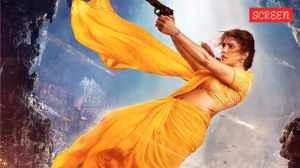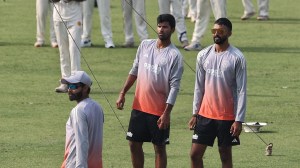In Hubli’s disputed Idgah, a lesson for Gurugram
Karnataka Elections 2018: In Hubli, which witnessed its worst communal riots in 1994, Hindus and Muslims have decided not to give in to communally provocative statements made by political leaders.
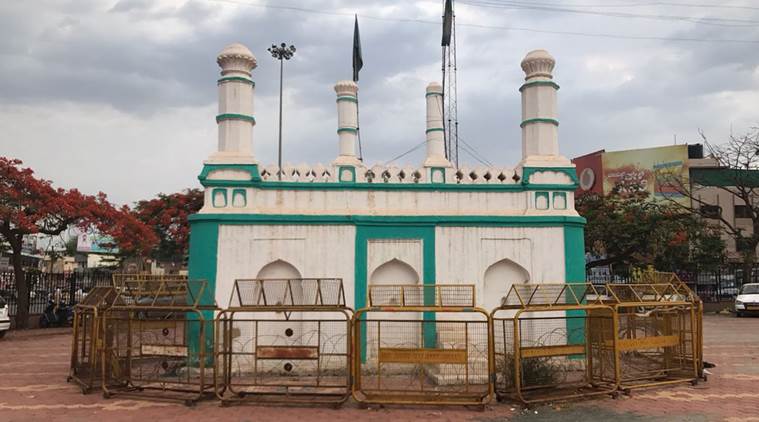 In 1994, six people were killed in police firing when right-wing activists, led by Uma Bharti, attempted to forcibly hoist the National Flag at the Idgah Maidan in the heart of the city (Express Photo/Aaron Pereira)
In 1994, six people were killed in police firing when right-wing activists, led by Uma Bharti, attempted to forcibly hoist the National Flag at the Idgah Maidan in the heart of the city (Express Photo/Aaron Pereira)
Gurugram — where right-wing activists are protesting against Muslims holding Namaz offerings in public — could take a lesson from Hubli, where, after witnessing its worst communal riots in 1994, Hindus and Muslims decided not to give in to communally provocative statements made by political leaders.
Back in 1994, Hubli saw its worst Independence Day celebrations. Six people were killed in police firing when right-wing activists, led by Uma Bharti, attempted to forcibly hoist the National Flag at the Idgah Maidan in the heart of the city.
Attempts to hoist the flag since 1992 were thwarted by the then Congress government in the state saying it would lead to communal tensions. In 1994, preempting an attempt to hoist the flag, the government imposed curfew in the state. But Bharti along with some volunteers managed to enter the city and were then arrested about a kilometre away from the venue.
Follow LIVE UPDATES on the Karnataka Assembly Elections 2018
In 1995, the matter was temporarily resolved after the president of Anjuman Islam hoisted the flag at the Maidan. The matter is currently pending in the Supreme Court.
Today, the Idgah is barricaded and there is 24×7 police presence at the site located right next to a statue of Rani Chenamma, the queen of Kittur who led an armed rebellion against the East India Company in 1824.
The last 15-odd years have been relatively peaceful. Following incidents of communal tension in the early 2000s, over rallies by then VHP leader Ashok Singhal, leaders of both the communities have resolved to ensure politics does not ignite hatred.
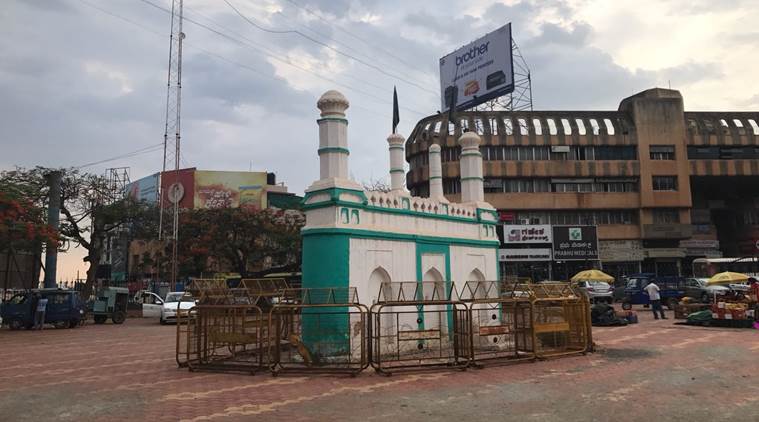 Today, the Idgah is barricaded and there is 24×7 police presence at the site. (Express Photo/Aaron Pereira)
Today, the Idgah is barricaded and there is 24×7 police presence at the site. (Express Photo/Aaron Pereira)
Farooq, who owns a welding and mechanical workshop in Kamaripet, the then communal hotbed, says he remembers those days very vividly. “There was complete curfew. Six people were killed in police firing. Nobody could step out…”
“But for the last almost two decades, we have ensured there is no communal violence. We vowed to never let such a thing happen again. We are just used by politicians to fulfil political agendas,” Farooq says.
Questioning the current political discourse, he asks why everything is linked to Pakistan. “Why do they keep bringing up Pakistan and Jinnah? Who speaks about him here? He wanted to divide the country. We would have been better of if we weren’t divided, living as one country. There wouldn’t be such a religious divide.”
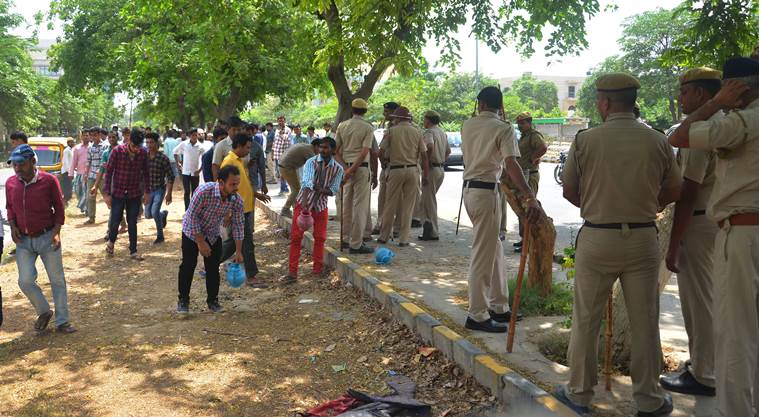 Police personnel at a site on M G Road in Gurugram where members of right-wing Hindu groups prevented namaz congregations (Express Photo/Manoj Kumar/File)
Police personnel at a site on M G Road in Gurugram where members of right-wing Hindu groups prevented namaz congregations (Express Photo/Manoj Kumar/File)
Closer to the Idgah is Amar, in his late 30s, who agrees with Farooq that certain politicians only look for opportunities to divide and polarise the electorate. “Why do they have to go and chant Bharat Mata Ki Jai and Jai Shri Ram when we are offering Namaz? Can there not be basic respect for other religions anymore? All of this is being politically managed. No person can have so much hatred otherwise.”
Amar has much praise for the then police commissioner KV Gagandeep, who, he says, cracked the whip on communal outfits on both sides that were receiving political funding to cause tensions.
“He was a tough administrator. When he used to conduct raids in the middle of the night, nobody would know where he was going. He would just ask the police force to assemble at a certain hour and then he would drive the vehicle. So nobody could leak any information.”
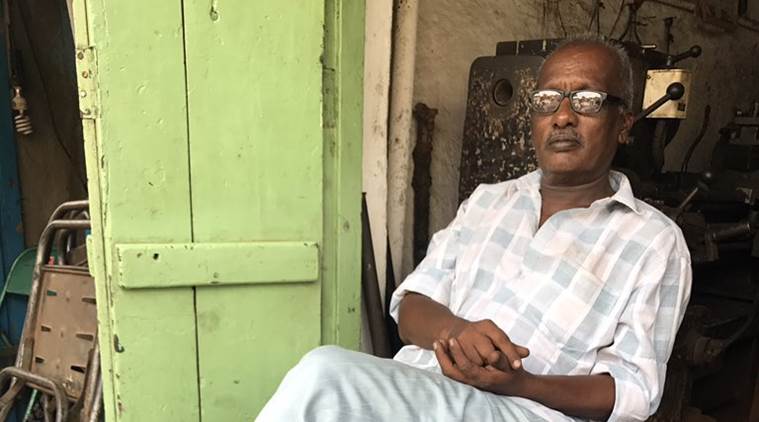 Farooq, outside his welding and mechanical workshop in Kamaripet. He says he remembers those days very vividly. “There was complete curfew. Nobody could step out…” (Express Photo/Aaron Pereira)
Farooq, outside his welding and mechanical workshop in Kamaripet. He says he remembers those days very vividly. “There was complete curfew. Nobody could step out…” (Express Photo/Aaron Pereira)
But for Amar, those years of communal tension cost the youth dearly. “There used to be many textile companies along the route to Karwar. Factories were coming here and people were getting jobs. But following the violence they shut shop and moved elsewhere. The mills are still there now, but left in a dilapidated condition.”



- 01
- 02
- 03
- 04
- 05


